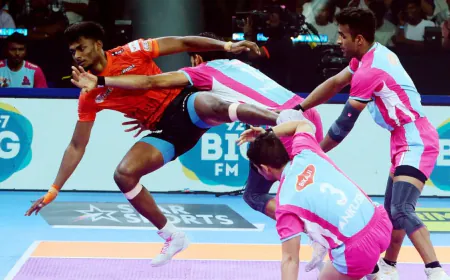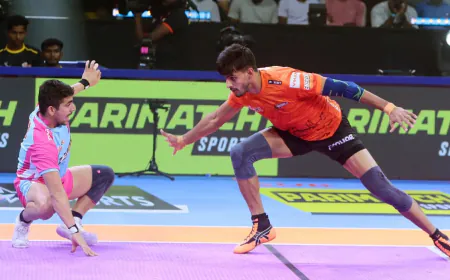India vs England-Why Mohammed Shami Was Left Out of Kolkata 1st T20I
Mohammed Shami's exclusion from the Kolkata 1st T20I against England has sparked discussions. This article delves into the reasons behind the decision, team strategy, and its implications for India’s performance in the T20I series.

India's decision to miss out Mohammed Shami from the playing XI in the first T20I against England at Eden Gardens, Kolkata, has evoked a massive reaction among fans and cricket pundits as Shami, one of India's prime fast bowlers, was seen practicing with full intensity in the nets before the toss.
Strategy and Team Combination Captain Suryakumar Yadav and head coach Gautam Gambhir revealed the strategy at the toss as the reason for Shami's exclusion is that the pitch conditions and the team balance are cited. Surya Kumar said, "We would want to bowl first. It's a bit sticky wicket. There would be heavy dew later. Boys have been amazing and preparations have been good. We will try to go along with our strength."
The Indian bowling for the game included Arshdeep Singh as the only specialist pacer and the rest of the support from all-rounders Hardik Pandya and Nitish Kumar Reddy. The side also wanted to highlight the spin option as Varun Chakravarthy, Ravi Bishnoi, and Axar Patel have been included in the side as well, thinking that the Eden Gardens wicket would provide more support to the spinners. This strategy ensured India a well-balanced side while providing depth both in bowling and batting.
Eden Gardens-A Spinner-Friendly Venue
The Eden Gardens pitch, always known for generating high-scoring matches, came into play when India planned its strategy. Experts such as Deep Dasgupta and Nick Knight pointed out that though the pitch did have a greenish tinge to it, the pitch was still expected to not offer much assistance to the pacers and go on to become highly favorable for spinners as the game progressed. With significant dew anticipated in the latter half, India’s decision to rely on spin over pace appeared to be a calculated move.
Mohammed Shami-Fitness and Workload Management
This game is excluded from Shami due to the reasons of fitness as well as workload management. He hasn't played any international cricket since the 2023 ODI World Cup where he has given phenomenal performances. Though Shami has been declared fit for the T20I series, the injury history in the recent past had the management taking a cautious approach.
Shami was missing from action during the Border-Gavaskar Trophy series against Australia, early this year. The BCCI medical team had kept him out of play, maintaining that the bowler had not yet regained the necessary level of fitness to play the longer matches. It arguably sealed India's 3-1 loss in the series and even eviction from the final of the World Test Championship. But his performances on the domestic circuit after that spell augur well for a comeback into the national side.
Resting Shami in Kolkata helps maintain a thin balance between long-term fitness and experimenting with the squad. Such an act goes into the making of a broader approach from India while getting geared up for the bigger events lying right in front in the near future. At the same time, it may also be contributed to the work load management level of important players.
BALANCING STRENGTHS VS. OPPORTUNITIES
The exclusion of Shami also vindicates the team's desire to provide opportunities to newcomers while also trying out different combinations. In the first T20I, Dhruv Jurel, Washington Sundar, and Harshit Rana were some of the other notable exclusions. These selections prove the depth of the Indian squad and the battle for selecting the best XI.
Suryakumar Yadav’s emphasis on sticking to team strengths suggests that India is keen on building a cohesive unit capable of adapting to varying conditions. While Shami’s experience and skill would undoubtedly have added value, the decision to rest him demonstrates a forward-looking approach that prioritizes the team’s overall development.
Mixed Reactions from Fans and Experts
Shami's exclusion has received mixed reactions from the cricketing fraternity. While many are disappointed, citing the excellent record of the bowler and his ability to deliver during crunch time, experts have largely endorsed the move, arguing that the workload management of Shami was required for the long term so that he would be available during crucial matches in the days ahead.
This decision also brought to the forefront the problems with team selection for a series played between two equal teams. Now, with the strong lineup at their disposal, every tactical call is under question. Shami was missing, no doubt, but his absence was part of a calculated risk by the Indian management to exploit conditions and try various combinations.
Short-term Aims and Series Prospects
It could also be seen in the circumspect approach that the team took about Shami. That Shami was excluded from Kolkata, for instance, could easily be defended with the purpose of balancing immediate wins against long-term goals.
As the T20I series continues, the focus will be on India's bowling group and how their selected combination will pan out. Shami may well return to the XI for the remaining games depending on how the team fares in his absence and the types of pitches they are to face in the remaining matches.
In conclusion, Mohammed Shami’s exclusion from the first T20I against England is a testament to India’s evolving strategy and emphasis on adaptability. While the decision may have raised eyebrows, it reflects a well-thought-out approach aimed at achieving both immediate success and long-term stability. Fans can expect exciting contests ahead as India and England battle it out in what promises to be a highly competitive series.





















































